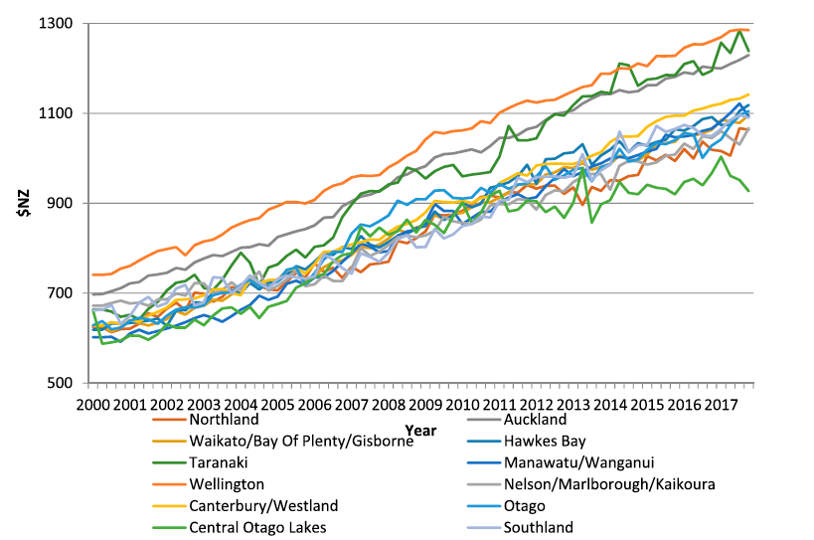
Over the last few years, I’ve spent some time looking at and engaging with the affordability debate. For New Zealand, it is a significant but not so hotly contested debate, given the linear rise in wages set against exponential growth of house prices across all of the regions. Here is a less technical graph of the regional wage changes 2000-2017 and some excerpt here from a journal article I co-wrote…
“Inspection reveals that regional wage rates have been on an upward trend. Central Otago Lakes has the lowest wage compared with the rest of New Zealand’s regions, especially when set against its high house prices. Average weekly earnings in Central Otago Lakes have risen from approximately NZ$600 in 2000 to approximately NZ$900 in 2017. Central Otago Lakes also demonstrates some wage volatility, arguably due to its seasonal labour force associated with being a tourist destination. Of similar interest is the average wage climb in the Taranaki region, which saw an increase in average wage from NZ$650 in 2000 to have the second highest average regional wage at NZ$1400 in 2017, and this region’s port/oil industry may have an important influence here. It is pertinent to see that Wellington has the highest wages, despite many general core industries being located in Auckland; the high and uniform climb of wages in Wellington to almost NZ$1300 is emblematic of a more stable workforce in the public service and professional services sectors in Wellington, whereas Auckland and Central Otago Lakes have higher proportions of more casual employment, despite both regions experiencing steep house price acceleration.”